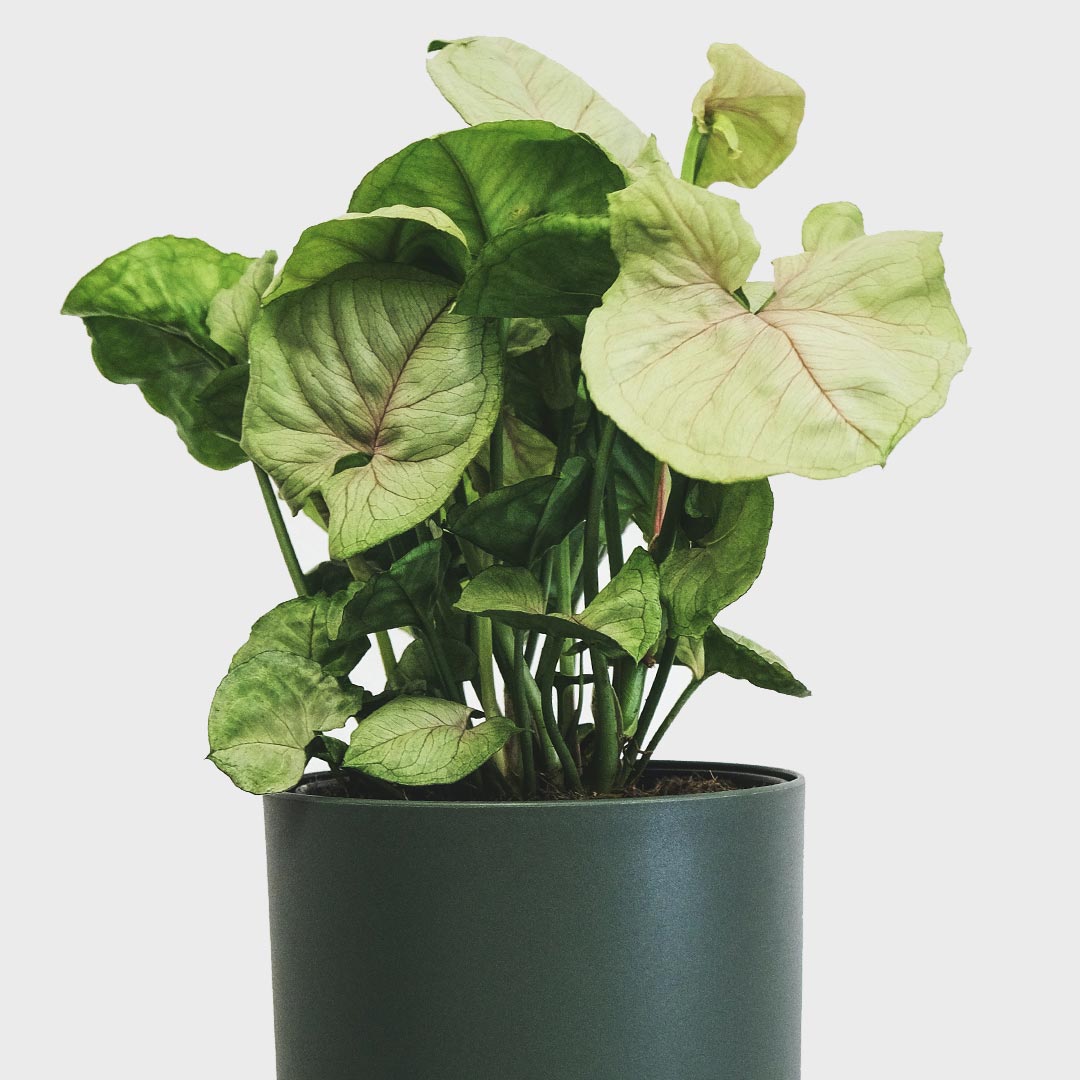
Deliver to
Austria
 English
EnglishMedium light
Water once a week
Toxic
Air-purifying
It is best to place the Syngonium in medium bright light to partial shade. The Syngonium prefers a spot next to a window on the west or east. A spot near the south is of course also possible. Make sure that the plant is at least 2 metres away from the window. If the Syngonium is exposed to (too much) direct sunlight, the leaves will burn.
It is important to always keep the soil of the Syngonium slightly moist. You can check this with your finger in the soil. Never let the Syngonium dry out. Not even in winter! It is best to water the Syngonium once a week all year round. In the winter it may be a smaller amount.
The Syngonium uses a lot of energy from spring onwards to make new leaves. As a result, the plant needs extra nutrients. You can provide these nutrients by means of plant nutrition. We recommend giving plant nutrition once every two weeks. From spring until autumn. After autumn and in winter it is better not to give extra nutrients. In the winter, plant nutrition can actually be harmful for the Syngonium!
Repotting the Syngonium isn't necessary every year. We recommend repotting the Syngonium every 2 years. This gives the plant new nutrients and more room for root growth. The airier soil is also very good for the water flowing through. The best period to repot is spring.
The most ideal temperature for a Syngonium, also known as Arrowhead Plant, is typically between 18 to 27 degrees Celsius. It prefers a warm and moderate climate.
Pruning a Syngonum helps remove any old or overgrown stems, encourages branching, and promotes a fuller and bushier growth habit. Trimming back excessive growth can also help maintain an attractive shape and prevent the plant from becoming too unruly.
The Syngonium does not suffer from any diseases. Although pests can occur on all types of plants. It is therefore good to check the plant regularly. In case of vermin, you can always use a pesticide.


Yes, the Syngonium is originally a climbing plant. In nature, the Syngonium grows upwards against trees and plants.
Syngoniums are relatively small plants. As an indoor plant, the Syngonium can grow to a maximum height of 180 cm. The width of the Syngonium indoors can be around 60cm.
Yes, indeed. Syngoniums can root in water. Growing a Syngonium in water is called hydroponics.
This is usually due to the fact that the Syngonium is not getting enough water. However, it is also possible that the plant is getting too much water. You can test the moisture content of the soil by sticking a finger into the soil.